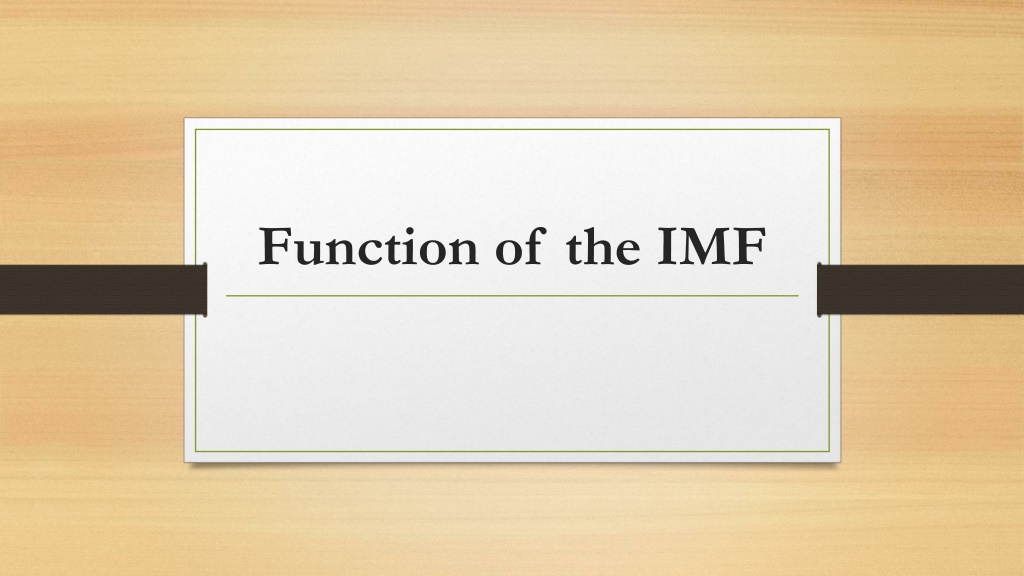The Functions of the IMF: Regulatory, Financial, Consultative
The International Monetary Fund (IMF) has several functions, including regulatory oversight, financial support for member countries facing balance of payments deficits, and providing consultative guidance. These functions are crucial in ensuring stability in the international monetary system. The IMF's conditionality requirements for granting credit, through surveillance and policy recommendations, play a key role in addressing macroeconomic instability. The Fund's focus on structural reforms and stabilisation programmes has been essential, especially for low-income countries facing economic challenges.
- IMF functions
- International Monetary Fund
- Financial support
- Regulatory oversight
- Consultative guidance
Download Presentation

Please find below an Image/Link to download the presentation.
The content on the website is provided AS IS for your information and personal use only. It may not be sold, licensed, or shared on other websites without obtaining consent from the author. Download presentation by click this link. If you encounter any issues during the download, it is possible that the publisher has removed the file from their server.
E N D
Presentation Transcript
Function of the IMF The principal function of the IMF is to super vise the international monetary system. Several functions are derived from this. These are: granting of credit to member countries in the midst of temporary balance of payments deficits, surveillance over the monetary and exchange rate policy of member countries, issuing policy recommendations. It is to be noted that all these functions of the IMF may be combined into three. These are: regulatory, financial, and consultative functions:
Regulatory Function: The Fund functions as the guardian of a code of rules set by its (AOA Articles of Agreement).
Financial Function: It functions as an agency of providing resources to meet short term and medium term BOP disequilibrium faced by the member countries.
Consultative Function: It functions as a center for international cooperation and a source of counsel and technical assistance to its members.
Function of the IMF The main function of the IMF is to provide temporary financial support to its members so that fundamental BOP disequilibrium can be corrected. However, such granting of credit is subject to strict conditionality. The conditionality is a direct consequence of the IMF s surveillance function over the exchange rate policies or adjustment process of members. The main conditionality clause is the intro duction of structural reforms. Low income countries drew attraction of the IMF in the early years of 1980s when many of them faced terrible BOP difficulties and severe debt repayment prob lems. Against this backdrop, the Fund took up stabilisation programme as well as structural adjustment programme . Stabilisation programme is a demand management issue, while structural programme concentrates on supply management. The IMF insists member countries to implement these programmes to tackle macroeconomic instability.























